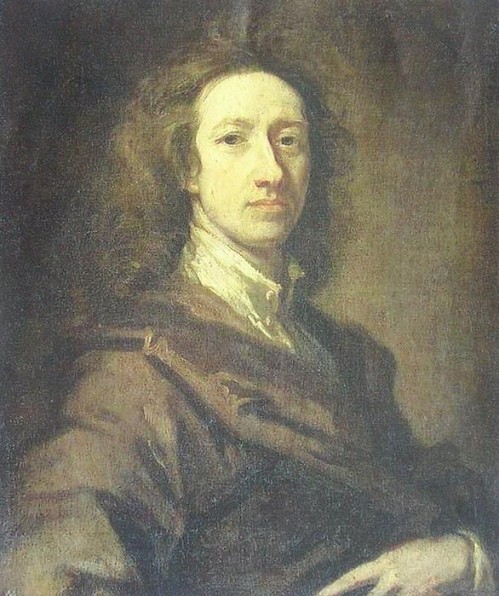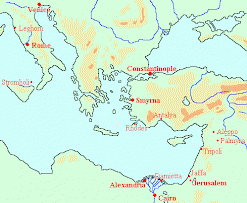Bruijn (3)
Cornelis de Bruijn (c.1652-1727) was a Dutch artist and traveler. He is best known for his drawings of the ruins of Persepolis, the first reliable pictures of these palaces to be accessible for western scholars. His other visits included the Ottoman Empire, Egypt, Jerusalem, Russia, and the East Indies.
The Aegean Sea

When De Bruijn arrived in the important port of trade Smyrna, in the summer of 1678, he was immediately accepted in the circles of the European diplomats. The Dutch consul offered him lodgings, and the English consul invited him for a visit to Selçuk and the ruins of ancient Ephesus. This was more than the young man could reasonably have expected. The consulship of Smyrna, one of the most important offices in the Dutch diplomatic world, was occupied by a nobleman who was not likely to receive any wanderer. De Bruijn was not a well-known artist and could not yet entertain his hosts with stories about countries they had not visited. The hospitality of the consul is even more remarkable when we take into account that he believed that his guest was the man who had tried to kill Johan de Witt.note

De Bruijn stayed in Smyrna for about half a year, and in December, he traveled by land to Constantinople, where he was to stay for a year and a half. His description of the capital of the Ottoman empire in Travels in the Principal Parts of Asia Minor is even less informative than his account of Rome. Because he wants to tell his readers something about the city, he offers excerpts from what he has read in several other books. Back then, this was not an uncommon practice (and in fact, even today, many guide books copy each other), but one wonders why De Bruijn adds almost nothing from his personal experience. There's not even a Turkish equivalent of an anecdote like his tale about the Bentveughels of Rome.note

A possible explanation is that he had not yet decided to write a book, and made not many notes. Alternatively, he had other business to attend, but it must have been difficult to make a living as a painter. The Sunna Islam opposes the representation of human beings, and De Bruijn's art can hardly have appealed to the Ottoman taste of what is called the Tulip Period. Perhaps he was on a Casanovanote-like secret mission (it is interesting to note that Casanova gives no description of his first stay in Constantinople either). This may seem far-fetched, but at least the Dutch ambassador at the Sublime Porte was convinced that the wandering artist had political contacts, because he did not take steps against him, even though he believed that the painter had attempted to kill Johan de Witt. An easier, albeit partial, explanation for De Bruijn's omission is that for eight months, he suffered from a serious illness.
In July 1680, De Bruijn sailed back to Smyrna. He interrupted his voyage to visit the site that was believed to be the ruin of ancient Troy, and went ashore in Mytilene on the isle of Lesbos. In Smyrna, he spent the autumn and winter and planned a visit to the Holy Land, where he wanted to celebrate Easter.
De Bruijn left when the sea became navigable again in February 1681. In his company was his compatriot Rogier van Cleef, who was to gain some fame when William of Orangenote built a palace called Het Loo. William ordered the fountains to spout higher than those of Louis XIV at Versailles, and Van Cleef was able to do this. But this was still in the future when the two Dutchmen reached Rhodes, where they spent three weeks.
They continued their trip and sailed to Tyre. Currents make it hard to sail directly to the south, so a detour was made to Damietta, a famous port on one of the eastern mouths of the Nile. Unfortunately, adversary winds made it impossible to go to Palestine. Never at a loss what to do, De Bruijn decided to stay in Egypt.